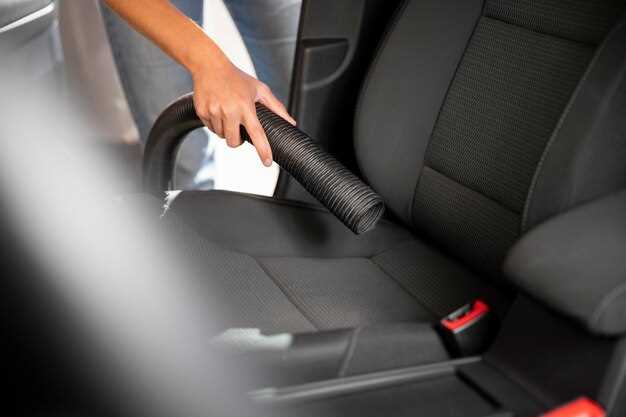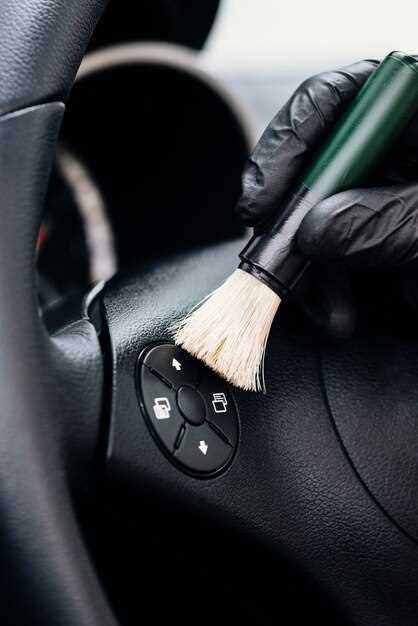
Car upholstery often faces a variety of stains from food, drinks, mud, and other substances that can diminish the overall appearance and comfort of your vehicle. Keeping the interior of your car clean is crucial not only for aesthetics but also for maintaining its value over time. Stains can become permanent if not addressed promptly, making it essential to have effective cleaning strategies at your disposal.
Understanding the types of materials used in car upholstery, whether it’s fabric, leather, or vinyl, is vital for choosing the right cleaning methods and products. Each material has specific cleaning requirements and sensitivities that, if overlooked, can lead to damage. Moreover, knowing how to tackle different types of stains can save you time and effort in the long run.
In this article, we will explore a range of effective techniques and guidelines for removing common types of stains from car upholstery. From homemade solutions to commercially available products, we will provide insights that will empower you to restore your vehicle’s interior to its original condition. Whether you’re dealing with a stubborn coffee spill or a muddy footprint, the following strategies will help you achieve a clean and inviting car environment.
Identifying the Type of Stain for Targeted Treatment

Effectively cleaning stains from car upholstery begins with accurately identifying the type of stain. Different materials and substances require specific approaches to avoid damage and ensure optimal results. Understanding the nature of the stain allows for targeted treatment, which can enhance the effectiveness of cleaning methods.
Common types of stains can be categorized into several groups, each requiring distinct cleaning strategies. First, there are water-based stains, which typically include spills from beverages like coffee, juice, or soda. These stains can usually be treated with a mixture of mild soap and water, followed by blotting with a clean cloth.
Next, oil-based stains are often caused by substances such as grease, motor oil, or food. These stains can be more challenging to remove and typically require a solvent-based cleaner. Using a degreaser designed for automotive upholstery can effectively break down the oil without damaging the fabric.
Another category is dye stains, which can come from food dyes, ink, or other colored substances. These stains often require specific stain removers formulated to neutralize dyes without discoloring the upholstery. Testing the cleaner on a small, inconspicuous area first is essential to avoid unwanted damage.
Additionally, there are organic stains, such as those from pet urine, blood, or vomit. These stains often require enzymatic cleaners that can break down organic materials effectively. Treatment should be prompt to prevent lingering odors and staining.
Finally, it’s important to recognize the type of upholstery material as well. Different fabrics, such as polyester, leather, or suede, react differently to various cleaning agents. Always refer to manufacturer guidelines for the best cleaning methods suitable for the specific fabric in your vehicle.
In summary, identifying the type of stain is critical for selecting the most effective cleaning method. By understanding the origin and nature of the stain, you can ensure that your cleaning efforts are both efficient and safe for your car upholstery.
Choosing the Right Cleaning Products for Various Upholstery Materials
When it comes to maintaining the appearance of your car’s interior, selecting the appropriate cleaning products tailored to the specific upholstery material is essential. Different fabrics require distinct cleaning methods and solutions to prevent damage and ensure longevity.
For fabric upholstery, such as polyester or nylon blends, a mild detergent mixed with water can effectively lift stains. Look for products labeled specifically for upholstery cleaning, avoiding harsh chemicals that may fade or weaken the fibers. A fabric steamer can also help in removing tough stains without the need for aggressive chemicals.
In contrast, leather upholstery requires specialized leather cleaners that maintain the material’s texture and suppleness. Opt for pH-balanced leather cleaners and follow up with a conditioner to prevent cracking and dryness. Avoid using all-purpose cleaners, as they can strip away the protective finishes on leather.
For vinyl upholstery, use a gentle soap solution or a dedicated vinyl cleaner. Products containing moisturizing agents can help preserve the material’s flexibility while removing dirt and grime. It’s important to avoid abrasive sponges or brushes that can scratch the surface.
When dealing with suede or alcantara, utilize a specialized suede cleaner or a soft brush to gently lift away dirt without damaging the nap. Water-based cleaners are not recommended as they can cause stains or discoloration. Always test any cleaning product on a hidden area before applying it to visible spots.
Finally, for any upholstery type, ensure the selected cleaning agents are free from bleach and strong solvents, as these can cause irreversible damage. Identifying the material and using compatible cleaning products will help maintain the aesthetic appeal and durability of your car’s upholstery.
Step-by-Step Guide to Removing Stains from Fabric and Leather Interiors

Removing stains from car upholstery requires specific techniques based on the material type. Here is a comprehensive guide to help you tackle stains effectively.
For Fabric Upholstery:
1. Identify the Stain: Determine what caused the stain (food, drink, oil) to select the appropriate cleaning method.
2. Blot the Stain: Use a clean, dry cloth to blot the stain gently. Avoid rubbing, as it can push the stain further into the fabric.
3. Prepare a Cleaning Solution: Mix one tablespoon of dish soap with two cups of warm water. Alternatively, use a fabric cleaner suitable for automotive upholstery.
4. Apply the Solution: Dampen a clean cloth with the cleaning solution and apply it to the stained area. Work from the outside of the stain inward to prevent spreading.
5. Blot Again: After applying the solution, blot the area with a dry cloth to absorb the cleaning solution and loosened stain residue.
6. Rinse: Dampen another cloth with plain water and wipe the cleaned area to remove any soap residue. Blot with a dry cloth to absorb excess moisture.
7. Dry: Allow the area to air dry completely. Avoid direct sunlight, as it may fade the fabric color.
For Leather Upholstery:
1. Identify the Stain: Common stains on leather include ink, oil, and food. Understanding the stain type helps in selecting the right cleaning approach.
2. Blot the Stain: Use a soft cloth to gently blot any excess from the stain. Do not rub, as this could damage the leather.
3. Prepare a Leather Cleaner: Use a commercial leather cleaner or prepare a mixture of one part vinegar to two parts water.
4. Test in an Inconspicuous Area: Before applying any cleaner, test it on a hidden area of the leather to ensure it does not cause discoloration or damage.
5. Clean the Stain: Dampen a clean cloth with the leather cleaner. Gently wipe the stained area, ensuring not to saturate the leather.
6. Wipe Off Residue: Use a separate dry cloth to wipe away any excess cleaner from the leather surface.
7. Condition the Leather: After the stain is removed, apply a leather conditioner. This helps maintain suppleness and prevents future damage.
8. Let Dry: Allow the leather to dry naturally in a cool, shaded area. Avoid heat sources or direct sunlight which can dry out and crack the leather.
By following these tailored steps for fabric and leather interiors, you can effectively remove stains and maintain the appearance of your car upholstery.





